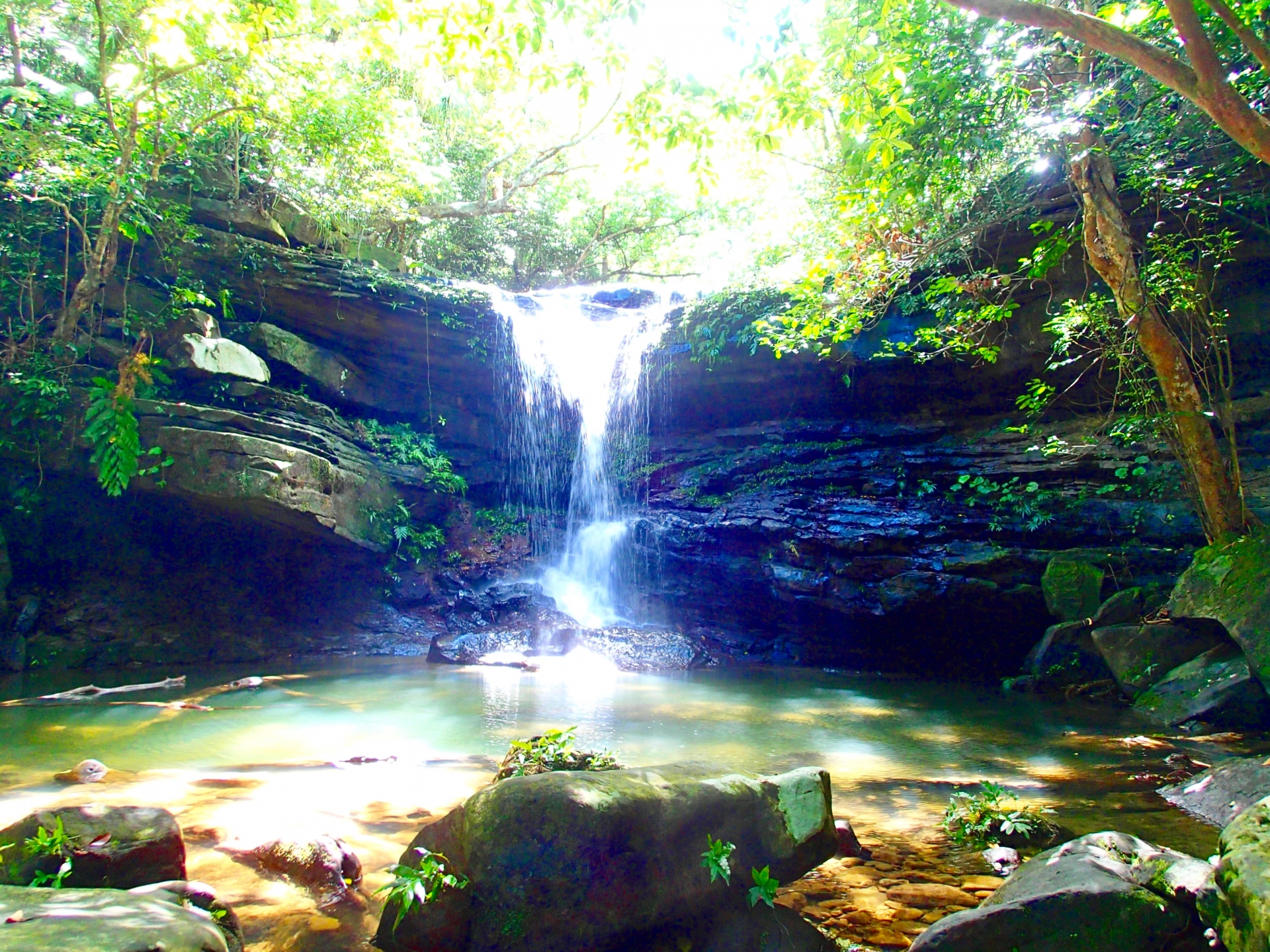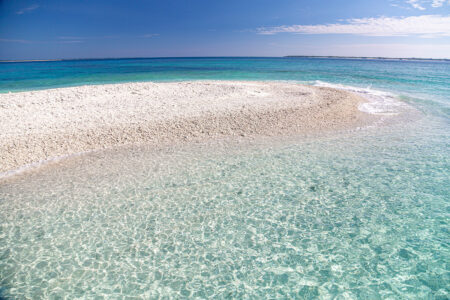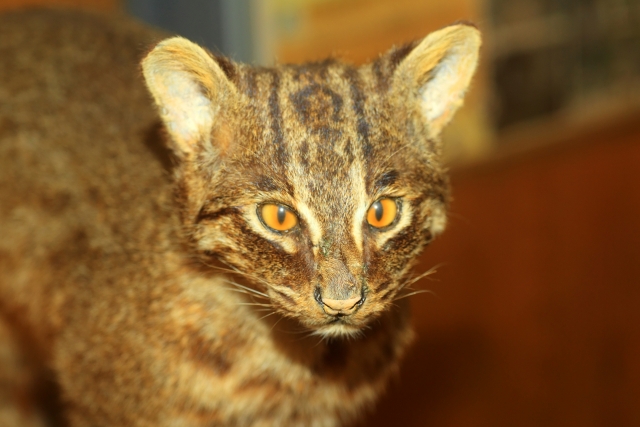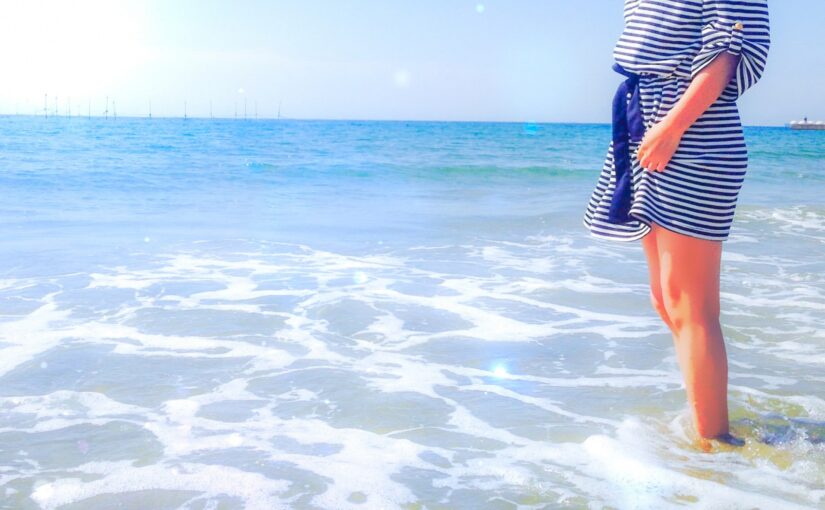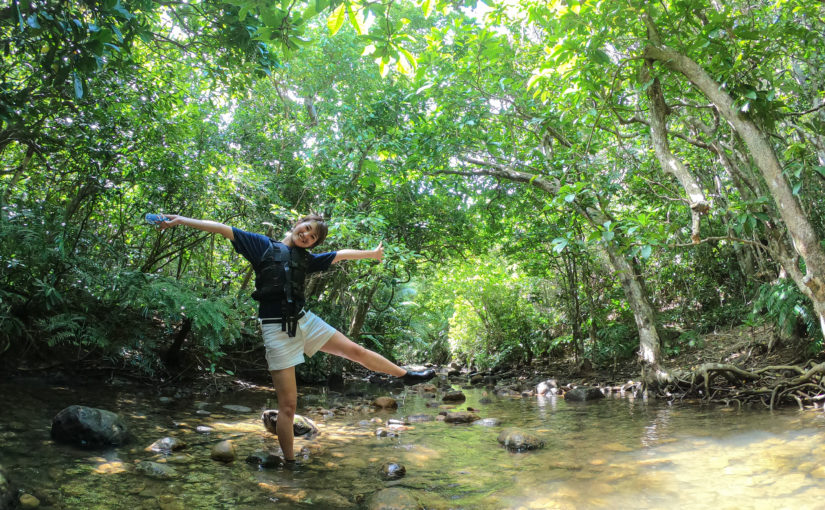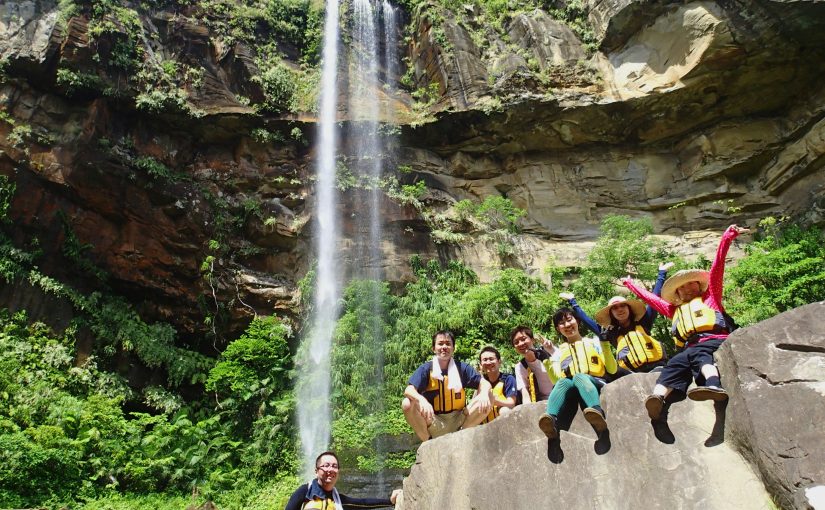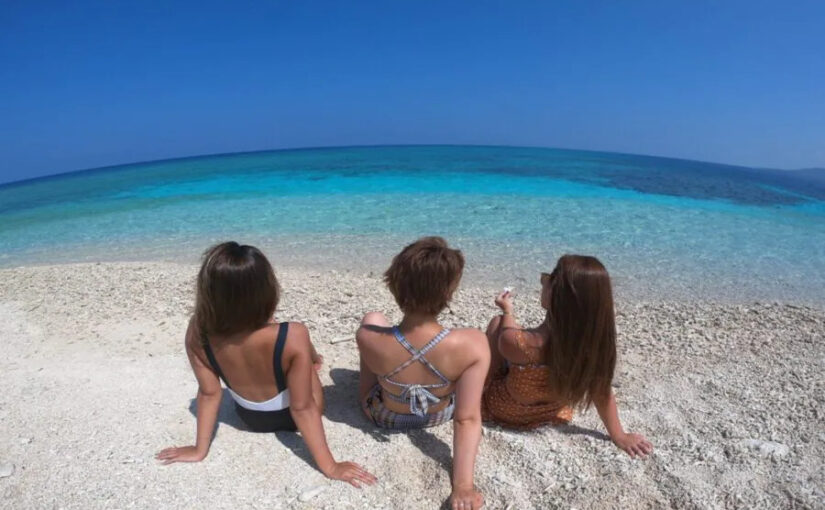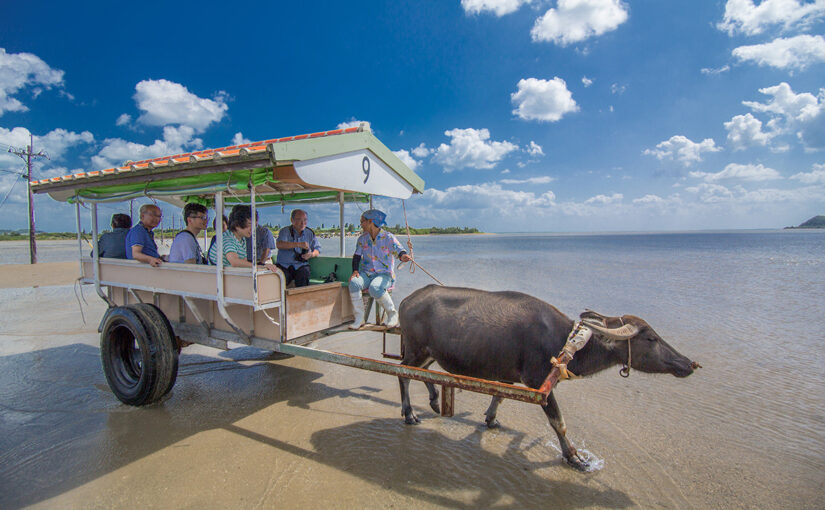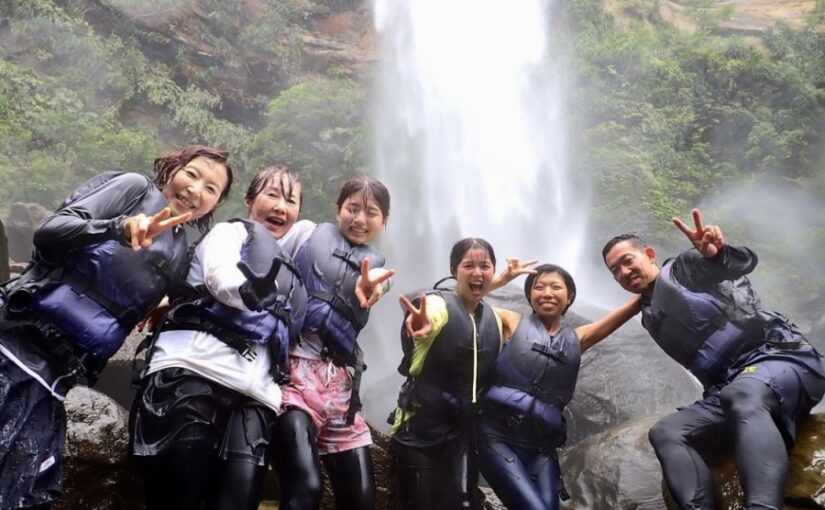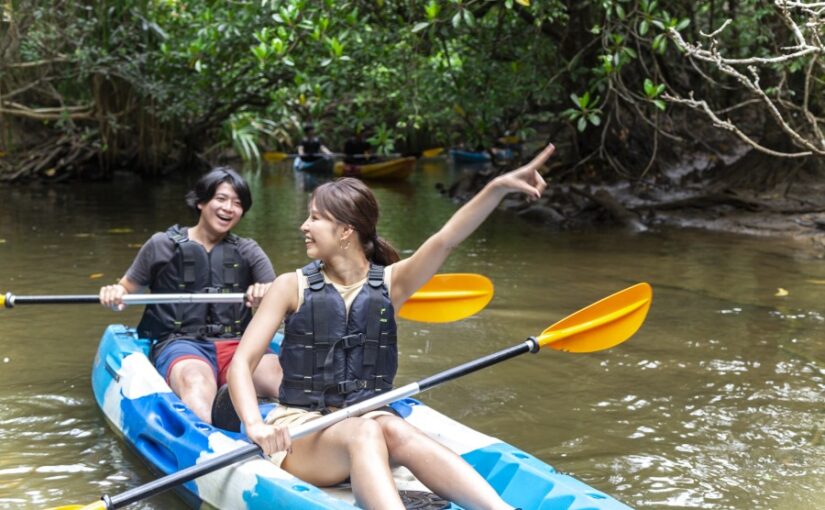Let's play in the mangrove forests of Iriomote Island!
Table of Contents
- 1 What are the mangroves of Iriomote Island?
- 2 Now it's time to explore the mangroves!
- 3 Plants that make up the mangroves
- 4 5 recommended mangrove spots in Iriomote Island
- 5 10 Mangrove Tours in Iriomote Island
- 5.1 Click here to buy ferry tickets to remote islands.
- 5.2 Real Jungle Cruise by SUP! Iriomote Island Unexplored Area SUP♪
- 5.3 Mangrove SUP (canoeing) & Canyoning - 1 day course
- 5.4 Canoeing & Yubu Island Sightseeing Tour
- 5.5 Popular trekking in Iriomote Island! Jungle Trekking
- 5.6 Experience the great outdoors! Canoeing & Trekking at the Upper Pinaisara Falls -One-day course (lunch included)
- 5.7 Early morning retreat and jungle healing
- 5.8 Trekking in the clear subtropical stream and the mystery of nature, Geeta Falls shower trekking and limestone cave exploration
- 5.9 Meet the mysterious waterfall! Gator Falls Shower Climbing - Half Day Course
- 5.10 Standard set♪ Sightseeing in Yubu Island by buffalo cart & Jungle trekking in Iriomote Island
- 5.11 Canoe & Shower Trek to Adanade Falls - 1 Day Tour - Great Adventure Tour
- 6 summary
What are the mangroves of Iriomote Island?
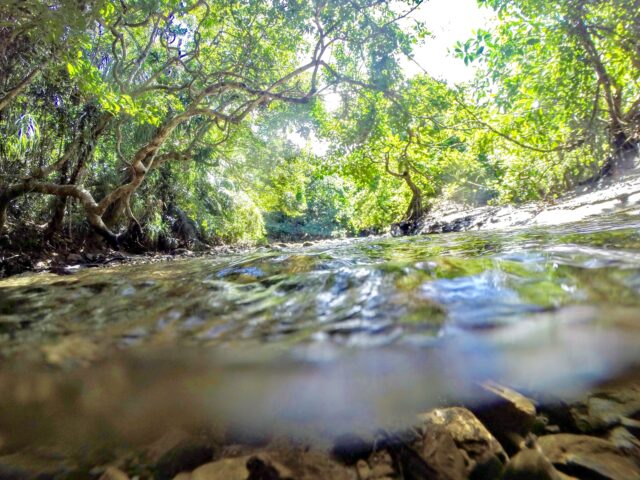
Mangroves are actually a general term for plants that grow only in a special environment, the intertidal zone where seawater repeatedly ebbs and flows in the tropics and subtropics.In other words, mangroves are not the name of a plant like pine or cherry trees, but rather a whole group of plants that grow only in limited environments, similar to the term "alpine plants.Seeing mangroves is the greatest pleasure when canoeing in Iriomote Island.
The most fascinating thing about mangrove plants is their roots! The roots of mangrove plants have a truly mysterious shape. This is because the roots of ordinary plants are always in a situation where they can breathe, whereas mangrove plants are rooted in mud where seawater enters, leaving them without oxygen. Mangrove plants use a variety of ingenious methods to ensure that they can breathe through their roots. Originally, the roots of plants burrow into the soil, but in addition to underground roots, mangrove plants have developed roots that breathe on the surface of the ground, called respiration roots.
Before canoeing in Iriomote Island, you should learn more about the charms of mangroves before kayaking, which makes it even more enjoyable.
For details of Iriomotejima Mangrove Canoe (Kayak) Tour and a list of plans, click here↓.
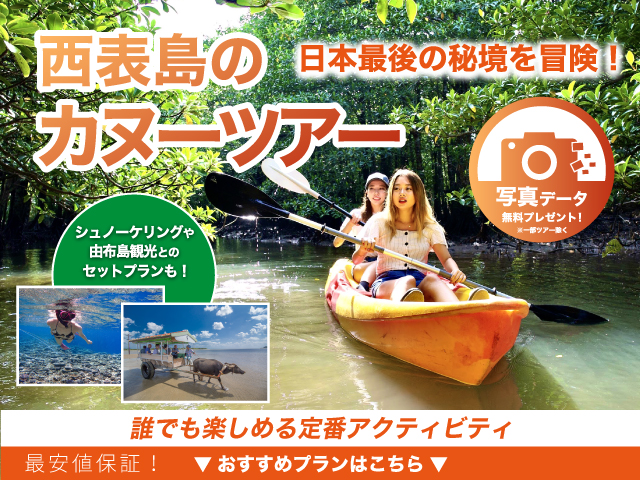 Iriomotejima Canoe (Kayak) Tour Enjoy the great nature of Iriomote Island with standard activities! Canoeing tour to the beautiful rivers of Iriomote Island with mangrove forests. (71 total) アクティビティの詳細を見る
Iriomotejima Canoe (Kayak) Tour Enjoy the great nature of Iriomote Island with standard activities! Canoeing tour to the beautiful rivers of Iriomote Island with mangrove forests. (71 total) アクティビティの詳細を見る prop root
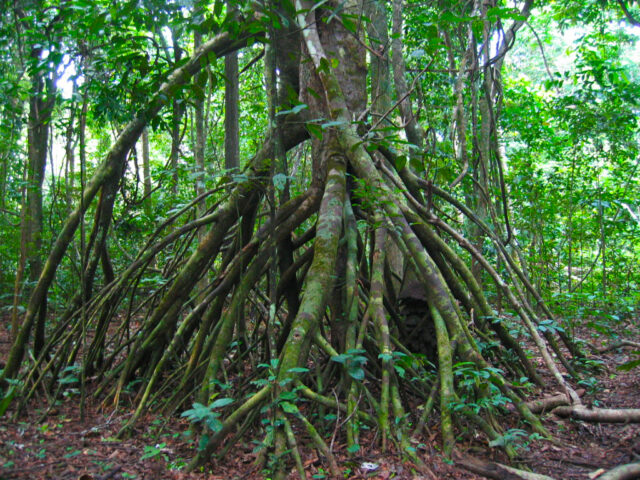
These octopus-like roots serve to support the body in addition to absorbing water. On the surface of the prop roots exposed to the air, they are known to photosynthesize in the same way as leaves.
bamboo shoot root
A bamboo shoot root is a root that grows vertically like a bamboo shoot from a shallow root in the ground. It is also sometimes called an upright root.
kneecap
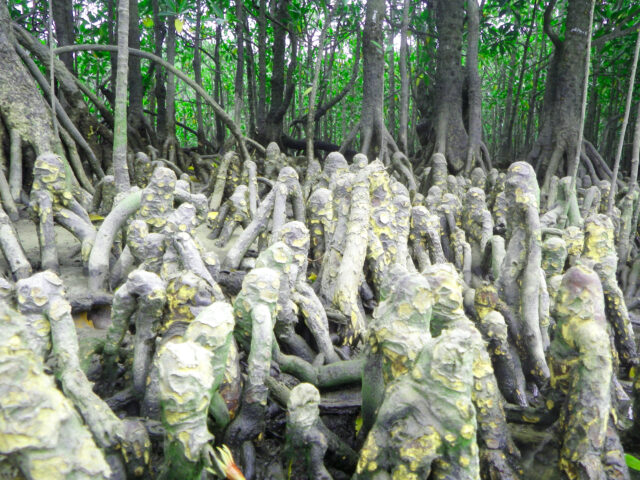
Source: http://www.geocities.jp/higatakaseki/tubuyaki/mangrove/yubujima.html
They are called knee roots because they are shaped like a bent human knee. The knee-root is not the result of a single root bending over, but rather a raised portion of a root, and in muddy conditions with little oxygen, the number of knee-roots increases.
Japanese yew (Taxus cuspidata)

The wide, thin, plate-like roots that develop at the base of the plant are called plank roots. It is thought to be a variant of the prop root, and like the prop root, it also serves to support the body.
Salinity control of mangrove plants
Mangrove plants can grow in freshwater as well as saltwater.In fact, mangroves never like seawater; rather, mangrove plants dislike salt and expel it in various ways.
When Yaeyama hirugi sucks up water from its roots, it filters out salt, and the unwanted salt accumulates on the leaves and causes them to drop. In this process, the leaves are dropped in order of distance from the tips of the branches, so that when you compare the yellow leaves with accumulated salt and the green ones with accumulated salt, you can taste the difference!
The hirgidamashi also has salt-discharging tissues called salt glands on its leaves, and on a sunny day with no wind, the salt crystals discharged on the leaf surface can be observed.
Mangrove vegetation
Mangrove plants differ in the environment in which they grow, depending on their species. The species of mangrove plants that grow in the seaward side of the mangrove are the hirugi damashi, mahazakuro, and yaeyama hirugi, while the oya hirugi grows in clusters closer to the inland area. The species with the best ability to expel salt are found growing on the seaward side.
On tidal flats, a unique food chain called the detritus food chain is observed.Detritus is organic matter that has been decomposed by bacteria, such as fallen leaves and animal carcasses,There are many of these detritus on the surface of the mudflats, which are fed mainly by crabs, such as the rice-clawed crab and the blue-spotted mud crab.
On tidal flats, small animals such as crabs eat detritus, which is then eaten by small birds and carnivorous crabs, which are in turn eaten by larger birds, and so on, creating a food chain with detritus at the bottom.
Now it's time to explore the mangroves!
Let's go inside the mangrove forest!
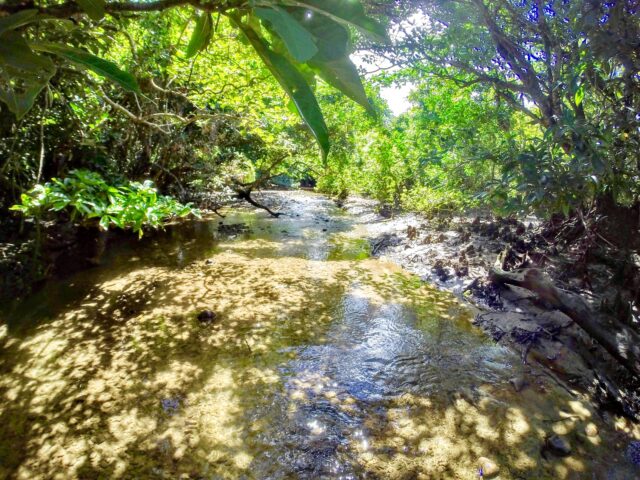
Let's go to a mangrove forest where the tide has receded! When the tide recedes, the ground is exposed just like a forest on land, making it easy to walk and observe a variety of creatures. When walking through the mangrove forests, be sure to use the river channels and small water pathways to avoid damaging the breathing roots.
Let's go to the tidal flats!
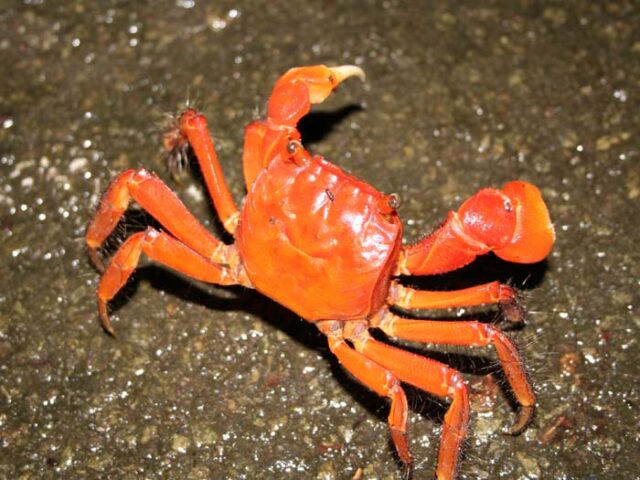
On the ocean side of the mangroves, there is a large mud flat at low tide, which is a heaven for crabs! The mudflats are a haven for crabs and a variety of other creatures.
The mangrove area is muddy in some places, and it is dangerous to wear flip-flops, so marine boots are recommended. There are also many crabs, so be careful not to step on them and crush them.
Let's go to the submerged mangroves!
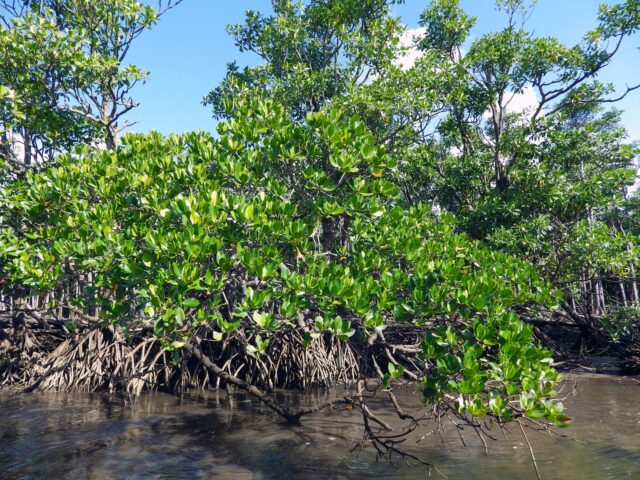
At high tide, the mangroves become an "underwater forest. The crabs that thrive at low tide are completely lost as they dive into the mud. Since the water is shallow, snorkeling is sufficient to observe them.
Also, be aware that depending on the tides, habu jellyfish, stingrays, sharks, etc. may enter the area.
Let's approach by canoe.

Canoes are a great way to observe the mangrove ecosystem.Unlike sightseeing boats, canoes can easily reach narrow tributaries and shallow water at low tide.Even if the surrounding area dries up at the lowest tide of the high tide, a canoe can be used to pull you to the water.Canoeing is a great way to observe the mangroves without being affected so much by the ebb and flow of the tide.
Canoes do not make noise like boats with engines, so you can use all five senses to enjoy the sounds of birdsong, insects, the wind, the smell of flowers, and the presence of animals. At low tide, small mudflats are formed in various parts of the river, and you can observe many kinds of creatures that cannot be seen on the large mudflats on the ocean side.
Click here for a detailed list of Iriomote Island canoe (kayak) tour plans.
 Iriomotejima Canoe (Kayak) Tour Enjoy the great nature of Iriomote Island with standard activities! Canoeing tour to the beautiful rivers of Iriomote Island with mangrove forests. (71 total) アクティビティの詳細を見る
Iriomotejima Canoe (Kayak) Tour Enjoy the great nature of Iriomote Island with standard activities! Canoeing tour to the beautiful rivers of Iriomote Island with mangrove forests. (71 total) アクティビティの詳細を見る Plants that make up the mangroves
To my surprise, all of the mangrove plants that grow in Japan can be found on Iriomote Island! It is said that there are 5~9 kinds of plants that compose the mangrove of Iriomote Island.
The definition of mangrove plants is comprehensively determined by the definitive characteristic of growing in salty water, such as seawater or brackish water, as well as other characteristics such as root morphology and having emergent shoots. The characteristics of mangrove plants are evaluated and classified into three classes: "pure mangrove," "semi-mangrove," and "subordinate mangrove," and only pure mangrove may be considered a mangrove plant.
pure mangrove
bayberry (Vaccinium vitis-idaea)
It is a species found only in the eastern area of Iriomote Island, and especially in Nakama River, a solid colony can be seen. In the tropics, it grows to 25 meters high, but the one in Iriomote Island seems to be only 6~7 meters high.
black mangrove (Bruguiera gymnorrhiza)
In tropical regions, there are large trees over 30 meters tall, but on Iriomote Island, the trees are only 7 to 8 meters tall, and even the largest ones are only 12 to 13 meters tall. It is also called "akabana hirugi" (red flower) because of its red flowers.
Kandelia obovata (species of mangrove)
It is a small evergreen tree and grows to about 5 to 6 meters tall. Although large colonies cannot be seen in Iriomote Island, it can be observed at the mouths of Urauchi River and Nakama River. It is a species that is expanding its distribution to the north, with Kiri in Kagoshima Prefecture as its northern limit, and can be seen outside of Yaeyama.
Rhizophora mucronata (species of mangrove)
An evergreen tree over 10 meters tall, it is the most common species that makes up the mangroves of Iriomote Island. It has a prop root like an octopus.
white mangrove
In Okinawa, only 1 to 1.5 meter tall trees are found, but in the tropics they can reach 20 meters. It is the type of mangrove that grows most on the seaward front.
semimangrove species
Indian pipe (Monotropa uniflora)
It is evergreen, and the ones in Okinawa are only 3 to 4 meters long, but in Southeast Asia, 20-meter-long ones can be seen.
nipa palm
In Japan, it grows only in Iriomote Island. A colony is found in the Yashi River in Funaura Bay and on Uchi-Isolated Island, and is designated as a national natural monument. It grows to a height of about 3 meters, and is characterized by the fact that most of the stems are underground and only the leaves seem to grow directly out of the mud.
5 recommended mangrove spots in Iriomote Island
Pinaisara Falls
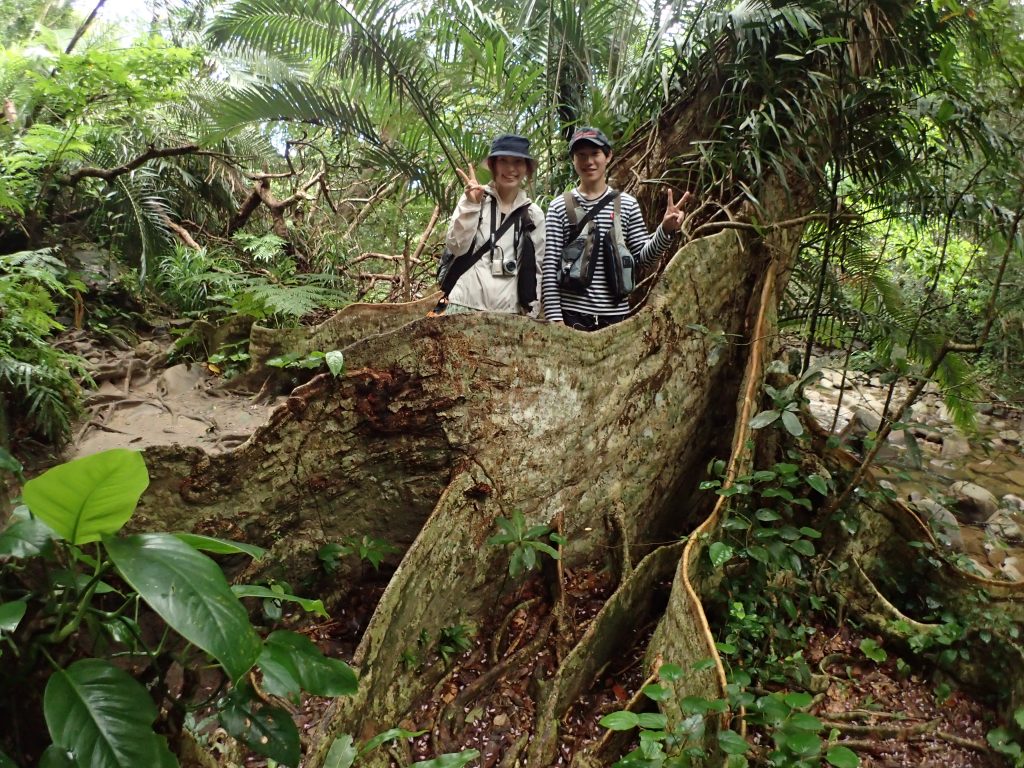
Visitors generally take a canoe to the base of the falls and then trek to Pinaisara Falls. Along the way, mangrove trees such as Yaeyama Hirugi, Ohirugi, and Mehirugi can be seen.
You can also see saxifrage and other plants and animals during the trek.
For more information, click here↓.
Pinaisara Falls
Sangala Falls
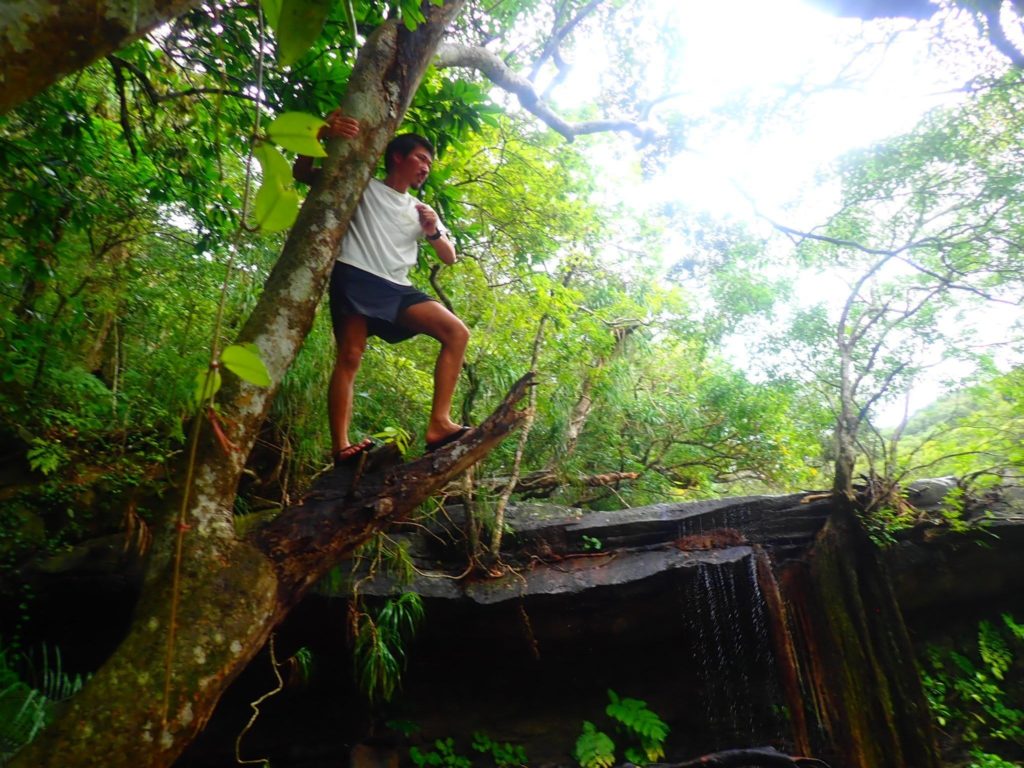
It is a rare waterfall with a river width of more than 30 meters, and it is home to plants and animals unique to the subtropical zone, such as the tenagaebi and thongmee.
Compared to Pinaisara Falls, which is a tourist attraction, there are fewer people.sense of seclusionI recommend it because of the
It is the only place in Iriomote Island where you can enter behind the waterfall.
[/su_box]
Click here for recommended related tours ↓↓.
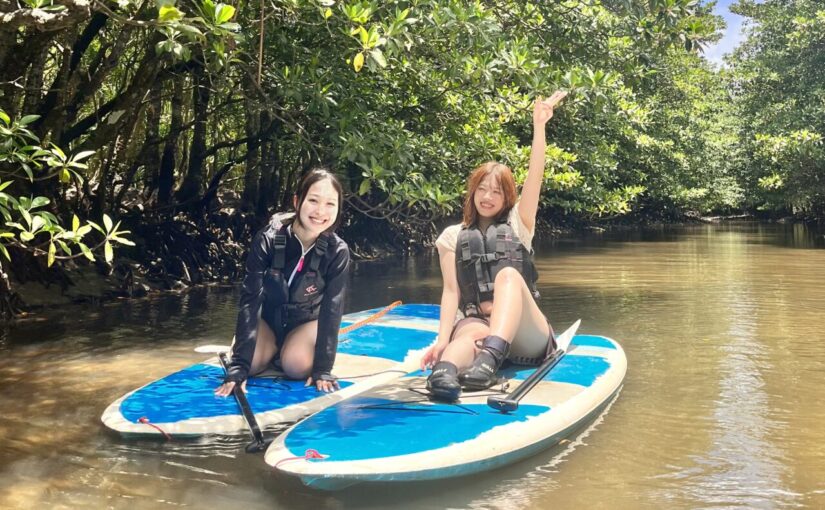 Iriomotejima Island] A classic of the World Natural Heritage Iriomote Island!開始時間9:00-11:30 / 13:00-15:30所要時間Approx. 2.5 hours8,900 yen →directional marker or indicator7,900suffix for names of swords, armour, musical instruments, etc.
Iriomotejima Island] A classic of the World Natural Heritage Iriomote Island!開始時間9:00-11:30 / 13:00-15:30所要時間Approx. 2.5 hours8,900 yen →directional marker or indicator7,900suffix for names of swords, armour, musical instruments, etc.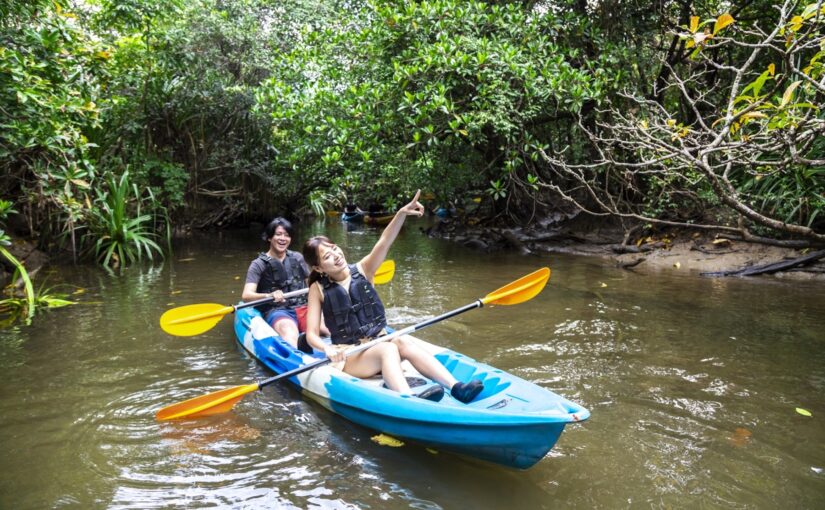 Special Winter SALE [Iriomote Island/2.5 hours] Same-day reservation OK!開始時間9:00-11:30,13:00-15:30所要時間2 hours and 30 min.8,900 yen →directional marker or indicator7,900suffix for names of swords, armour, musical instruments, etc.
Special Winter SALE [Iriomote Island/2.5 hours] Same-day reservation OK!開始時間9:00-11:30,13:00-15:30所要時間2 hours and 30 min.8,900 yen →directional marker or indicator7,900suffix for names of swords, armour, musical instruments, etc.
Urauchi River
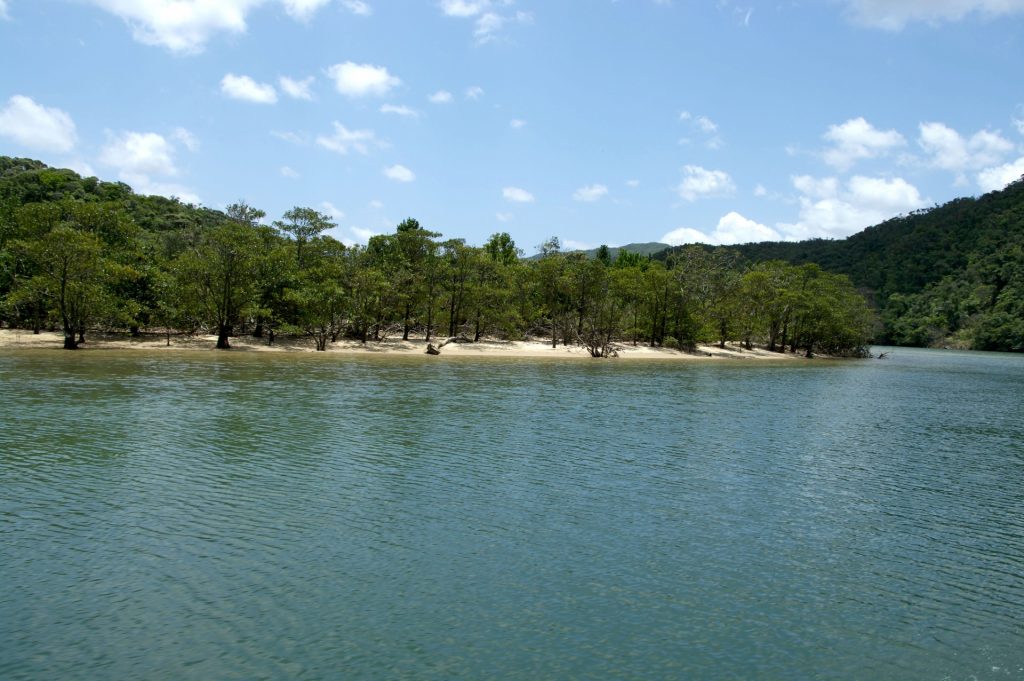
The Urauchi River is the largest mangrove river in Japan. Pleasure boats and kayak tours are popular on the Urauchi River, and here you can see the magnificent trees of the "Otaniwatari". Also, as the largest mangrove river in Japan, the river is wide and powerful.
For more information, click here↓.
Urauchi River
pale chub (Zacco platypus)
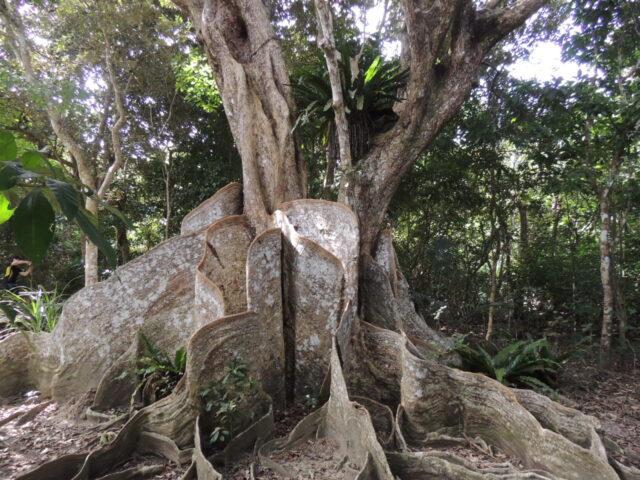
The Nakama River is used as a field for tours around remote islands. Because the Nakama River is reached by sightseeing boat, visitors can see mangrove trees without using their physical strength.
The 400-year-old "saxifrage tree," said to be the largest in Japan, can be seen in the upper reaches of the Nakama River. 400-year-old subtropical plants are very powerful.
For more information, click here↓.
Nakama River
limestone cave

At this spot where a series of large, medium, and small limestone caves are located, there are many trees (kuzuimo) that Totoro used as umbrellas. The pristine limestone caves are of course wonderful, but it would also be nice to take a picture like Totoro under the kuzuimo.
For more information, click here↓.
Iriomote Island - limestone caves
10 Mangrove Tours in Iriomote Island
Click here to buy ferry tickets to remote islands.
Only Tours can make ferry reservations! Since you pay in advance, you can easily board the ferry by simply showing your smartphone on the day of the cruise. You don't have to worry about getting caught in the queue at the ticket booth on the day of boarding.
Click here to book ferry tickets to Iriomote Island!
Iriomote Island Ferry Tickets
Real Jungle Cruise by SUP! Iriomote Island Unexplored Area SUP♪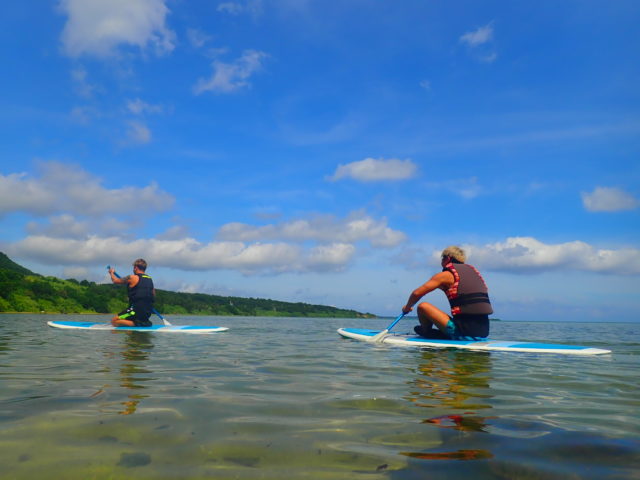
Explore the magnificent nature by canoe. This canoe tour is a great way to enjoy the unique nature of the subtropical zone.
This tour includes the popular Kula River cruising in Iriomote Island, trekking to Kula Falls, which is called "Lucky Falls", and playing in the water at Kula Falls. This is a tour to enjoy the unexplored region of Iriomote Island where you can play in the water at Koola Falls. Observe precious creatures that can only be found here in this unique world. Canoe cruise among the trees surrounded by greenery will give you an indescribable feeling of freedom.
The canoe tour starts at the mouth of the ocean and enters the river from there. You can hear the sounds of flora and fauna as you canoe to unexplored areas that are unreachable on foot.

By the end of the tour, a sense of accomplishment and exhilaration will fill your heart.
One of the attractions of canoeing is that it can be enjoyed year-round and is not easily affected by weather. Because nature provides shelter from the wind and is not easily affected by it, canoeing is stable at any time of the year, spring, summer, fall, or winter, and tours can be enjoyed at any time of the year.
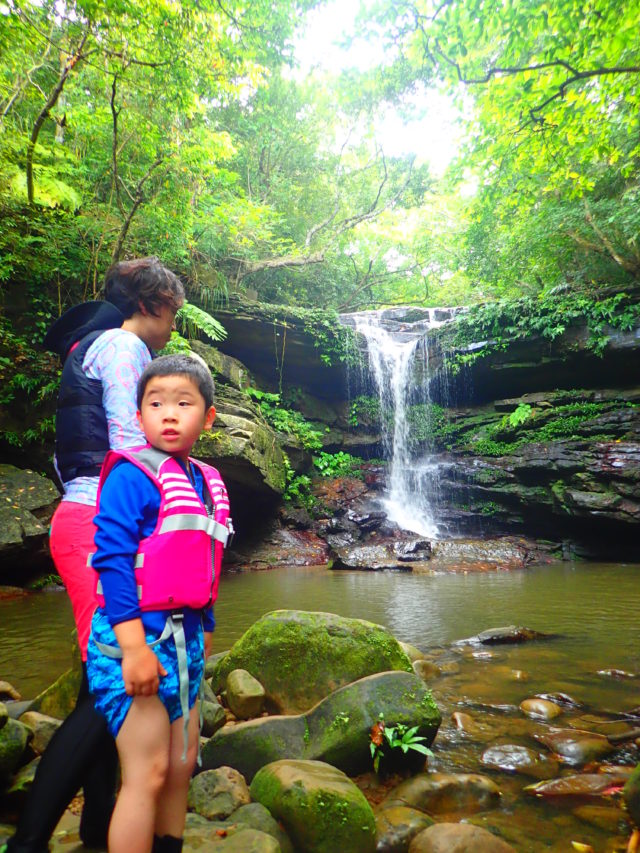
There are different ways to enjoy each of the four seasons: canoeing while sunbathing and enjoying the forest in spring and summer, and canoeing while viewing the river in fall and winter.
Canoeing and sea canoeing offer completely different pleasures, of course, but even on the same river, the types of plants that can be seen change from moment to moment as the field changes. Please enjoy the jungle by canoe.
You can enjoy three activities in one tour: cruising by SUP or canoe, exploring the jungle, and playing with waterfalls.
Mangrove SUP (canoeing) & Canyoning - 1 day course
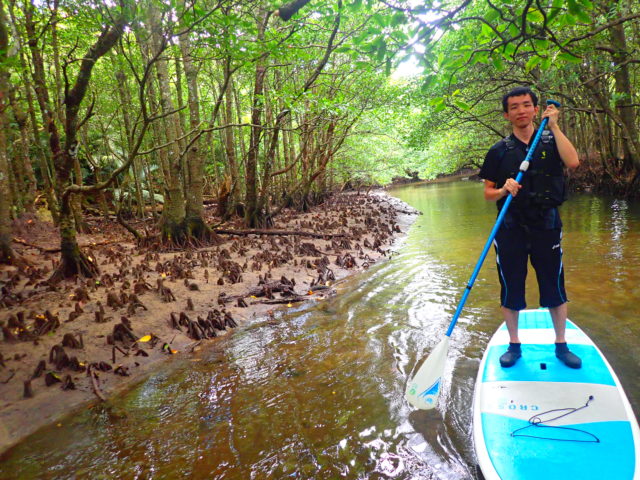
This tour includes canyoning, diving in Iriomote Island's waterfalls and mangrove rivers, and SUP and canoeing in the rivers that flow by the mangrove forests.
In the morning, you can enjoy the mangrove jungle of Iriomote Island by mangrove canoeing and trekking. Take your time and watch the transition of mangrove species, and listen to the voices of animals living in the mangroves.
In the afternoon, participants will experience canyoning down the river while jumping in and swimming in the clear water of Iriomote Island.

You can feel the tropical summer of Iriomote Island in your body and get exhilarated by canyon rings while cooling your body in the river after being burned by activities. This is a perfect plan to have a lot of fun with your friends or couples and enjoy the nature of Iriomote to the fullest.
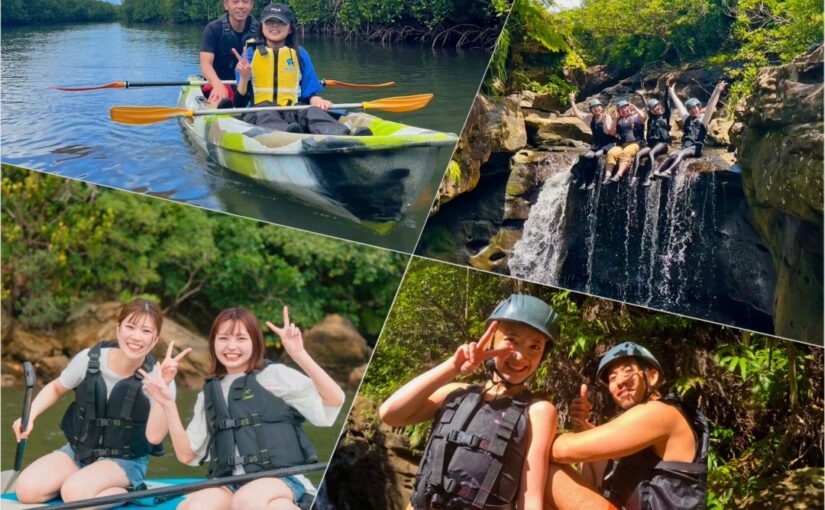 Winter Special SALE 【Iriomotejima / 1 Day】Paddle and jump into the water with great excitement! Mangrove SUP or Canoe & Powerful Canyoning Tour 《Photo Free & Pick Up & Drop Off Available》(No.97)開始時間9:00-15:30所要時間Approx. 6.5 hours21,700 yen →directional marker or indicator15,000suffix for names of swords, armour, musical instruments, etc.
Winter Special SALE 【Iriomotejima / 1 Day】Paddle and jump into the water with great excitement! Mangrove SUP or Canoe & Powerful Canyoning Tour 《Photo Free & Pick Up & Drop Off Available》(No.97)開始時間9:00-15:30所要時間Approx. 6.5 hours21,700 yen →directional marker or indicator15,000suffix for names of swords, armour, musical instruments, etc.Canoeing & Yubu Island Sightseeing Tour
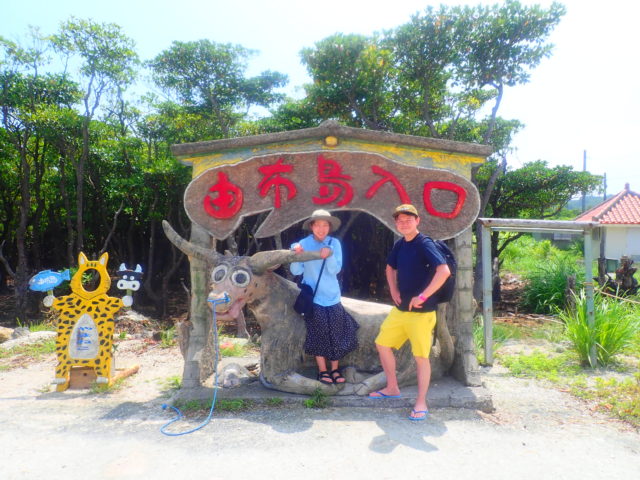
Yubu Island is a small island made only of sand deposited by ocean currents, and the entire island is a botanical garden called "Subtropical Botanical Paradise.
Yubu Island offers a variety of indoor activities, such as a building called "Shell House," which exhibits many shellfish mainly from the sea around Iriomote Island, such as coconut crabs and sea turtles, and a building called "Butterfly Garden," which mainly keeps the largest butterfly in Japan, the giant sesame tree butterfly.
 Special Winter SALE 【Iriomotejima / 1 Day】Sightseeing and activity as a set! Yubu Island" Sightseeing & Mangrove SUP or Canoeing (No.124)開始時間9:00-15:30所要時間Approx. 6 hours14,000 yen →directional marker or indicator12,500suffix for names of swords, armour, musical instruments, etc.
Special Winter SALE 【Iriomotejima / 1 Day】Sightseeing and activity as a set! Yubu Island" Sightseeing & Mangrove SUP or Canoeing (No.124)開始時間9:00-15:30所要時間Approx. 6 hours14,000 yen →directional marker or indicator12,500suffix for names of swords, armour, musical instruments, etc.
Popular trekking in Iriomote Island! Jungle Trekking

Enjoy trekking to the unexplored region of Iriomote Island.
This tour takes about 2 hours, so you can enjoy an easy, authentic jungle trek. Even though the trekking is relatively easy, it is an authentic course where you can see a variety of flora and fauna, making it a trekking course that even children and the elderly can enjoy.

Along the way, you can also see many leaves of the kuzuimo potato, which is said to be the leaf that appeared in the movie My Neighbor Totoro. You can also see other rare trees with flattened roots, known as "ita-root. Some plants are edible and can be eaten as they grow naturally.
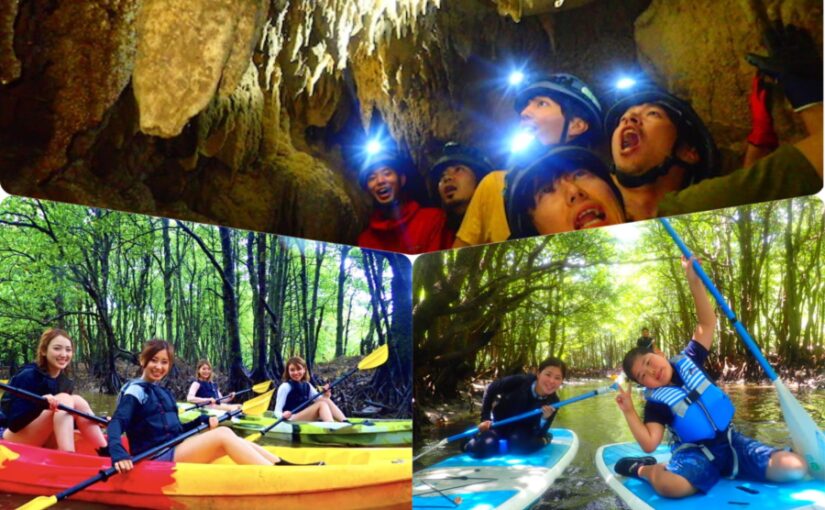 Special Winter SALE 【Iriomotejima】To the unexplored jungle of the World Heritage Iriomote Island! Mangrove SUP or Canoe & Stalactite Cave Experience Tour 《with free photo data present》(No.77)開始時間9:00-11:30 / 13:00-15:30所要時間Approx. 3 hours14,000 yen →directional marker or indicator12,000suffix for names of swords, armour, musical instruments, etc.
Special Winter SALE 【Iriomotejima】To the unexplored jungle of the World Heritage Iriomote Island! Mangrove SUP or Canoe & Stalactite Cave Experience Tour 《with free photo data present》(No.77)開始時間9:00-11:30 / 13:00-15:30所要時間Approx. 3 hours14,000 yen →directional marker or indicator12,000suffix for names of swords, armour, musical instruments, etc.
Experience the great outdoors! Canoeing & Trekking at the Upper Pinaisara Falls -One-day course (lunch included)
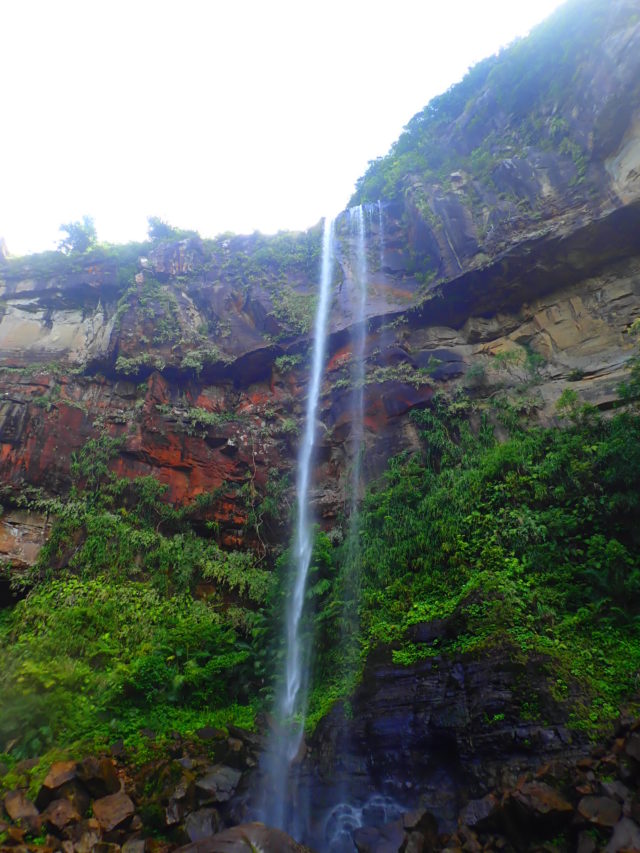
This tour takes you to the top of "Pinaisara Falls," a classic spot representing Iriomote Island, the "Galapagos of the East," by canoe on a river lush with mangroves, and trekking through the mangrove jungle.
In the morning, you will paddle a canoe through the pristine mangrove forest. You will feel a strong sense of coming to Iriomote Island when you see mangrove trees that have hardly been touched by human hands while riding a canoe.

On the way, we left the canoe and trekked to Pinaisara Falls. You can enjoy the scenery of unusual shaped trees and creatures that you have never seen in jungle trekking, which you can only see in Iriomote.
We will have lunch at the Pinaisara waterfall basin and take a short break. If you have enough energy, you can also swim in the waterfall basin!
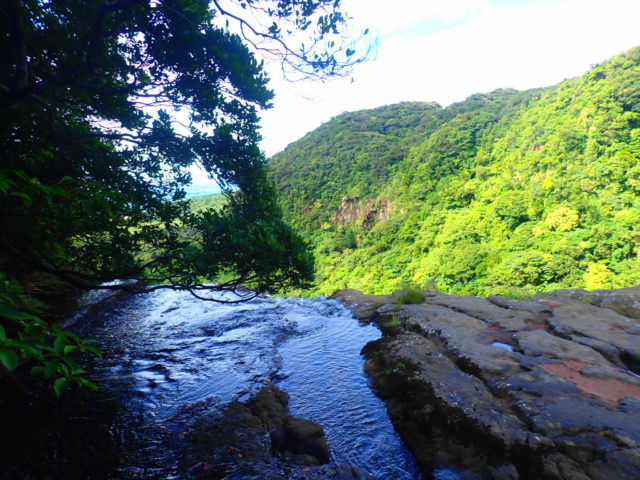
In the afternoon, we will trek to the top of the waterfall. The "super green" view of the whole Iriomote Island seen from the top of the waterfall will make you feel glad to have visited Iriomote Island.
 Iriomotejima Island / 1 day】To the top of Pinaisara Falls and the waterfall basin! Special tour with limited number of participants☆Mangrove canoeing & trekking course♪The view from the top of the waterfall is sure to impress you♪ Lunch included (No.12)開始時間9:00-16:00所要時間Approx. 6.5 hours14,000 yen
Iriomotejima Island / 1 day】To the top of Pinaisara Falls and the waterfall basin! Special tour with limited number of participants☆Mangrove canoeing & trekking course♪The view from the top of the waterfall is sure to impress you♪ Lunch included (No.12)開始時間9:00-16:00所要時間Approx. 6.5 hours14,000 yenEarly morning retreat and jungle healing
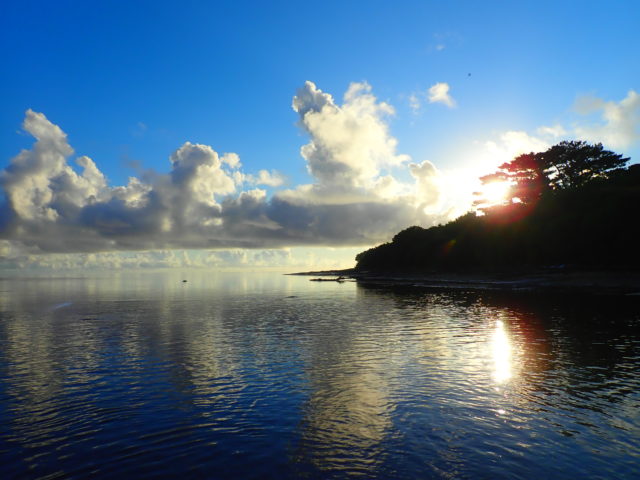
This is a tour to enrich your morning in Iriomote. You can experience early morning trekking as a morning activity. The jungle of Iriomote in the early morning is pleasant because the air is clear from morning.
Trekking through such a place, you can enjoy nature in the early morning. The chirping of birds and the sounds of animals heard in the quiet jungle will energize you in the morning. The jungle recharges your energy in the morning, when the creatures begin to be active. You can enjoy Iriomote jungle differently from daytime, evening, and nighttime.
This tour takes full advantage of the morning in Iriomote Island.
Trekking in the clear subtropical stream and the mystery of nature, Geeta Falls shower trekking and limestone cave exploration

There are many different waterfalls on Iriomote Island, but Geeta Falls is less challenging than other waterfalls, and even beginners can enjoy the experience.
To reach such a waterfall, we will go through the mangrove jungle, where only a monster trail continues, to the Gaeta River. After that, we will zigzag and climb up the stream of the Gaeta River. At the end of the trail, you can enter the river and enjoy a shower trek. At the end of the climb is the Gaeta Falls. At the waterfall, enjoy canyoning with all your might.
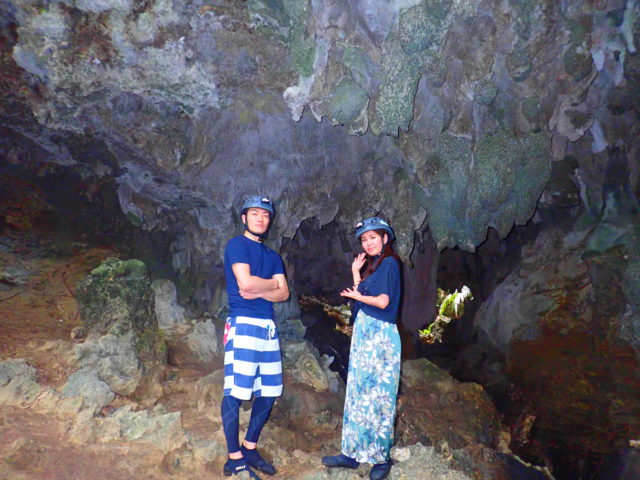
In the afternoon, we will explore the caves. We will trek through the jungle to a spot where there are limestone caves.
Caves such as limestone caves and mangrove jungle are very compatible with each other, and the gray limestone caves and the green of the mangrove jungle can be seen in contrast. It reminds us of the relationship between life and death, yin and yang.
This tour will take you to a place where you can feel the mystery of limestone caves, although it is a bit maniacal. You can experience and feel the coolness of four different types of caves: subtropical forests, streams, waterfalls, and limestone caves.
Meet the mysterious waterfall! Gator Falls Shower Climbing - Half Day Course

When it comes to mangrove exploration, this tour is not to be missed. It is the Gator Falls Shower Climbing Tour. The word "primeval forest" comes to mind, and you will see large plants that you have never seen before, and follow a beautiful mountain stream where you can feel nature in its natural state, aiming for the mysterious waterfall.
The only sounds you will hear along the way are animal noises and the sound of water. This is an authentic trekking and shower climbing tour where you can experience the subtropical jungle of Iriomote Island as you have imagined.
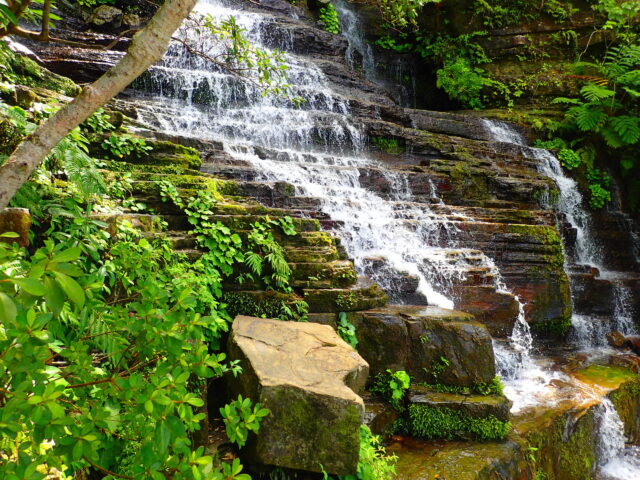
Trekking & stream climbing in the subtropical jungle, you can enjoy trekking while being caught by the irregularly lined trees all around. Once you arrive at your destination, Geeta Falls, and see the beautiful waterfall, your tired body will surely be energized after climbing the stream.
Standard set♪ Sightseeing in Yubu Island by buffalo cart & Jungle trekking in Iriomote Island

In the morning, take a leisurely buffalo car ride across the sea to Yubu Island, a famous sightseeing spot in Iriomote Island, and visit the subtropical botanical garden. In the afternoon, return to Iriomote Island, trekking through Japan's largest mangrove jungle, the entire island of which is designated as a national park, and play in a waterfall.
The mangrove jungle of Iriomote Island is known as a habitat of the Iriomote wildcat, and you will be overwhelmed by the subtropical virgin forest full of other flora and fauna that you cannot see in the mainland. During the trekking, you will surely be thrilled and excited by the mysterious waterfalls deep in the forest. Enjoy the active, primitive forest as if you were a child again.
Canoe & Shower Trek to Adanade Falls - 1 Day Tour - Great Adventure Tour
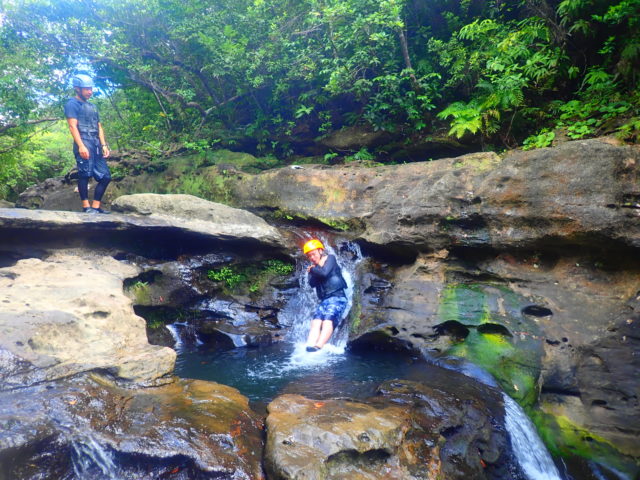
This is a real adventure tour to Iriomote Island, the "Galapagos of the East. We will enter the mangrove river from the sea by kayak and cruise slowly along the river path created by the mangrove river. At Adanade River, which is a tributary of Nakara River, you can paddle a canoe surrounded by mangrove trees protruding into the river. Paddling a canoe surrounded by nature is an exhilarating experience.
From the halfway point, you can get out of the canoe and enjoy trekking. You can also enjoy shower trekking at Adanade Falls.
summary
There are many different types of mangrove trees. It is fun to observe mangroves by canoe, kayak, or trekking while looking for which kind.
For details of Iriomotejima Mangrove Canoe (Kayak) Tour and a list of plans, click here↓.
 Iriomotejima Canoe (Kayak) Tour Enjoy the great nature of Iriomote Island with standard activities! Canoeing tour to the beautiful rivers of Iriomote Island with mangrove forests. (71 total) アクティビティの詳細を見る
Iriomotejima Canoe (Kayak) Tour Enjoy the great nature of Iriomote Island with standard activities! Canoeing tour to the beautiful rivers of Iriomote Island with mangrove forests. (71 total) アクティビティの詳細を見る For details of Iriomote Island Jungle Trekking Tour and a list of plans, click here↓.
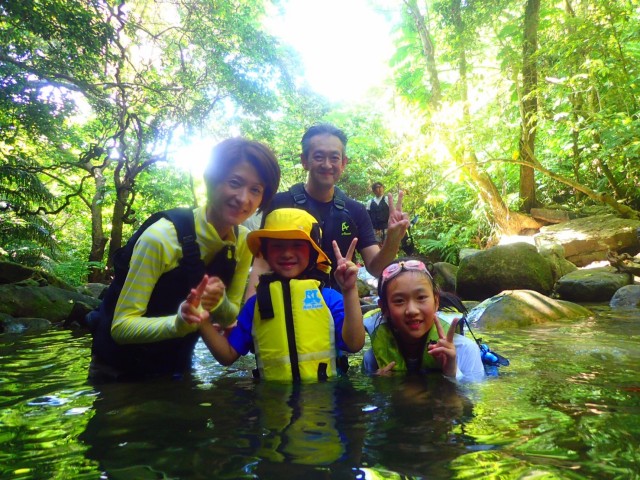 Iriomotejima Jungle Trekking Tour Jungle trekking tour to enjoy with your eyes while walking through the virgin forests of Iriomote Island, and enjoy the chirping of animals with your ears! (42 total) アクティビティの詳細を見る
Iriomotejima Jungle Trekking Tour Jungle trekking tour to enjoy with your eyes while walking through the virgin forests of Iriomote Island, and enjoy the chirping of animals with your ears! (42 total) アクティビティの詳細を見る
Click here to buy ferry tickets to remote islands.
Only Tours can make ferry reservations! Since you pay in advance, you can easily board the ferry by simply showing your smartphone on the day of the cruise. You don't have to worry about getting caught in the queue at the ticket booth on the day of boarding.
Click here to book ferry tickets to Iriomote Island!
Iriomote Island Ferry Tickets
All the fun of Iriomote Island is here↓.
Iriomotejima Tours

